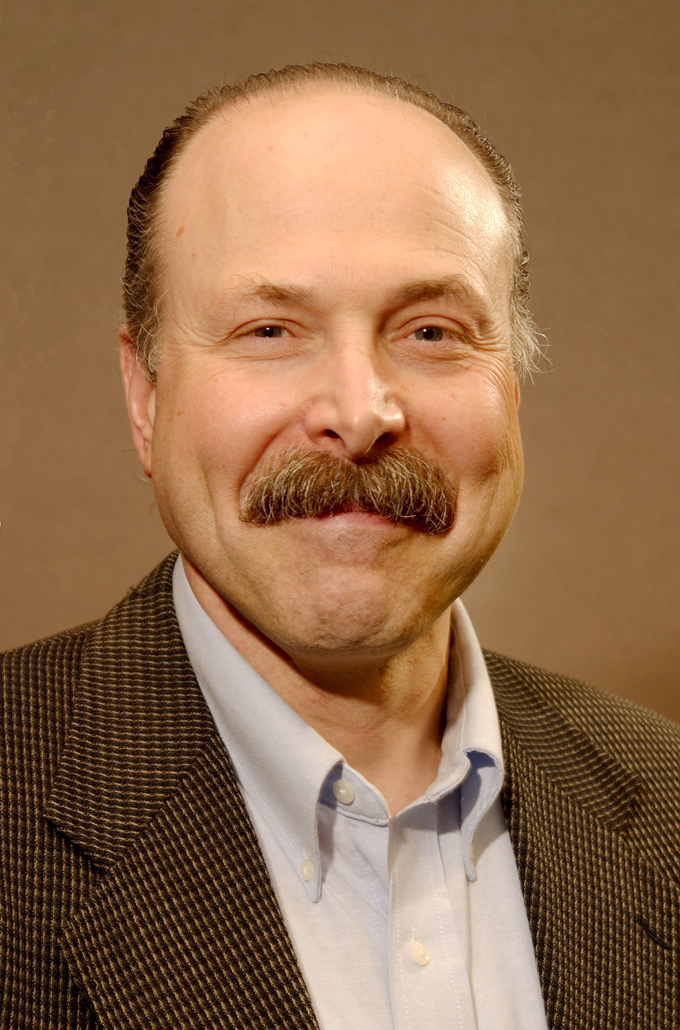
David D. Awschalom, professor of physics, electrical and computer engineering at UC Santa Barbara, has received the Turnbull Lecturer Award from the Materials Research Society (MRS). The Turnbull Lecturer Award recognizes the career of a scientist who has made outstanding contributions to understanding materials phenomena and properties through research, writing, and lecturing, as exemplified by David Turnbull.
Awschalom received the award for his pioneering achievements and leadership in establishing the field of semiconductor spintronics, including fundamental discoveries of spin transport and coherence in the solid state; developing new experimental techniques and materials engineering for spin-based quantum information science; and for excellence in communication through lecturing and writing.
"Professor Awschalom's outstanding research and writings on spintronics and materials have helped lead to a number of important breakthroughs," said UCSB Chancellor Henry T. Yang.
"This award recognizes his important contributions to science as an innovator, a teacher, and a true pioneer in developing the field of semiconductor spintronics. Our campus takes pride in his achievements and congratulates him on this important award."
Awschalom's Turnbull lecture will be delivered on Nov. 30, during the fall meeting of the MRS in Boston, and will cover semiconductor spintronics and quantum information processing.
"I am extremely honored by this award, and especially pleased that it recognizes the multidisciplinary efforts of my outstanding students, as they also believe that materials science is the catalyst for fundamental research in condensed matter physics," said Awschalom.
According to the MRS, Awschalom has been one of the key contributors to the understanding of spin coherent phenomena in a wide range of semiconductor materials, including semiconductor heterostructures and quantum dots. In addition to his pioneering work in the field of semiconductor spintronics, he continues to play a leading role in the discipline by inventing new femtosecond spatially resolved semiconductor spectroscopies, and developing submicron-scale spin-based systems. His engineering of electrically and magnetically doped semiconductors to explore electron spin transport have had a dramatic impact in the materials science and engineering communities. These activities have led to several seminal discoveries in science and engineering, including long-lived electron spin coherence in semiconductors; macroscopic transport of coherent spin states; electrical spin injection into semiconductors; ultrafast manipulation of electron and nuclear spins; engineered magnetic heterostructures; and the discovery of the spin-Hall effect. His temporally and spatially resolved experiments explore the spin degrees of freedom in a wide variety of semiconductor heterostructures and nanometer-scale systems.
This work has generated new probes of fundamental spin interactions for the scientific community and opened the possibility of future technologies based on the spin degree of freedom, according to the MRS. In addition to semiconductor spintronics, these discoveries have made this technology attractive for the implementation of quantum computing in the solid state. Awschalom's success is based on his persistent efforts toward the integration of the materials science, physics, and electrical engineering communities that have created new opportunities for research and technology in the emerging fields of solid-state spintronics and quantum computation.
His research group has activities in optical and magnetic interactions in semiconductor quantum structures; spin dynamics and coherence in condensed matter systems; and implementations of quantum information processing in the solid state. He and his students have developed a variety of femtosecond-resolved spatiotemporal spectroscopies and micromagnetic-sensing techniques aimed at exploring charge-and-spin motion in the quantum domain. These efforts have led to a number of discoveries in science and engineering, including long-lived electron spin coherence in semiconductors; macroscopic transport of coherent spin states; electrical spin injection into semiconductors; ultrafast manipulation of electron and nuclear spins; engineered magnetic semiconductor heterostructures; and observation of the spin Hall effect.
Awschalom's major contributions to the area of spintronics include considerable devotion to educating students and young researchers in this emerging area of research. He has organized and participated in several international "Spintech" schools on spintronics and quantum information technology, intended to give students a broad overview of the field, as presented by its leading researchers. He has also received the UCSB Chancellors award for undergraduate research, and the 2008 UCSB Faculty Lecturer Award "for a combination of outstanding research contributions, scholarship, scientific leadership, broad contributions to enriching the intellectual stature of UCSB, and for his outstanding role as a teacher and mentor."
Awschalom received an IBM Outstanding Innovation Award in 1987; the Outstanding Investigator Prize from the Materials Research Society in 1992; the International Magnetism Prize and Néel Medal from the International Union of Pure and Applied Physics in 2003; the Oliver E. Buckley Prize from the American Physical Society in 2005; the Agilent Europhysics Prize from the European Physical Society in 2005; and the Newcomb Cleveland Prize from the American Association for the Advancement of Science in 2006. Awschalom is a Fellow of the American Physical Society and the American Association for the Advancement of Science, and a member of the American Academy of Arts and Sciences and the National Academy of Sciences.
After receiving his Ph.D. degree in physics at Cornell University, Awschalom joined the IBM T. J. Watson Research Center as a postdoctoral fellow. He was appointed to the permanent staff at IBM, and as manager of the Nonequilibrium Physics Group. In 1992, he assumed his position at UCSB where, in addition to his position as professor of physics, he is also a professor of electrical and computer engineering, and the Peter J. Clarke Director of the California Nanosystems Institute.
He has published more than 300 articles, made over 700 invited presentations, and has been awarded four patents. Awschalom is the founding editor of the AIP Virtual Journal of Nanoscience and Technology and the editor of the Handbook of Spintronics, published by Springer. He has served as a member of the editorial board of Nanotechnology, published by the Institute of Physics; and Nano Letters, published by the American Chemical Society. Currently he is a member of the editorial board of Physics Reports. He has been awarded numerous lectureships at universities throughout the world.
Related Links
Materials Research Society



